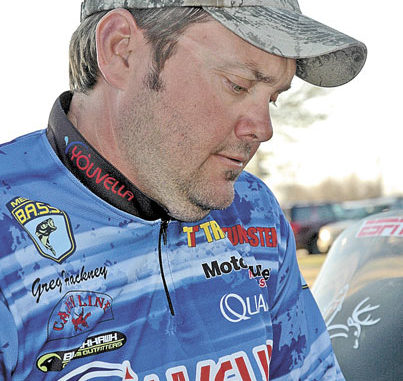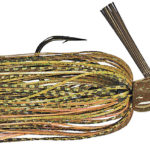
Three friends have transformed an old cow pasture into a widlife mecca in Caldwell Parish.
This month, most Louisiana outdoorsmen are deer and duck hunting, so the amount of fishing pressure on all the waterways has been reduced drastically.
Although November’s a prime month to fish Venice and Delacroix, I prefer Chicot Lake because most days on Chicot, anglers will find little or no fishing pressure.
Both Chicot Lake and False River, an old oxbow off the Mississippi River, hold really big bass.
Chicot Lake is a man-made reservoir with an abundance of cypress and tupelo gum trees and aquatic vegetation. In November, those big bass in Chicot really like to eat jigs and sometimes spinnerbaits, but I like to flip jigs.
My opportunity to catch a 5-pound-or-more bass is better at Chicot this month than on any other lake in the state. I have a lot of confidence in how, where and when to catch the bigger bass at Chicot in November.
Weather, more than any other factor, dictates where the bass will hold on Chicot this month. In really cold weather, the bass concentrate on the bottom. I’ll target the cypress trees in 2 to 3 feet of water right up against the bank, regardless of weather conditions. I like to fish shallow water, and can cover the water column better there. Chicot also has trees in 5- to 10-foot-deep water.
For success, I have to determine if the bass are suspended or holding on shallow or deep trees, or on the naked trees or the trees that have grass skirts around them. Some days, the bass want the jig when I pitch it to the tree and let it fall all the way to the bottom. Other days, the bass will be close to the surface, and I’ll have to swim the jig around those trees to get bites.
Regardless of which jig tactic I use, I’ll be fishing a 1/2-ounce Strike King jig on 50-pound-test braided line. Early in the morning, I prefer black/blue jigs because this is the darker part of the day and often the time with the most clouds. I’ve had a lot of success and caught numbers of big bass fishing a solid-blue jig on Chicot Lake. Some sections of Louisiana have blue crawfish. I don’t know if Chicot holds blue crawfish, but during November, nice-sized bass like the blue jig with a solid-blue trailer.
I use two different types of trailers — a Rage Craw and a 3-inch Denny Brauer Chunk. If the bass are extremely active, I’ll fish the Rage Craw on the back of my jig because it has a lot of swimming action.
On days after a front comes through and there’s high, bluebird skies, I prefer the Denny Brauer 3X Chunk trailer. If I don’t get bites on one trailer, I’ll switch to the other.
I love to flip, and have been successful flipping, swimming, pitching and fishing with jigs. This year, the Strike King lure designers and I have designed the best flipping jig on the market — the Hack Attack. It’s not a casting jig, but rather is designed strictly for flipping.
I’ve selected the right-sized hook and head design to make the Hack Attack jig the best possible for flipping. I’ve moved the line tie on the jig up to a 45-degree angle to get the line tie out of the bass’s way when it attacks the jig. Then when you set the hook, the line tie won’t hang on the bass’s lip.
The Hack Attack, available in sizes from 3/8- to 1 1/2-ounce, uses a wider-gap hook than most jigs. A 1 1/2-ounce jig has a lot of lead on the front end of the hook. Even though this big jig gets numbers of bites, oftentimes setting the hook can be difficult. To open up the hook and provide anglers with a better hook set and a bigger hook, I’ve decided to move the line tie.
Also, the lead has an extremely-heavy wire hook. You’ll need to fish this jig with a big rod and heavy line, such as 20- to 25-pound-test fluorocarbon line or 80-pound-test braided line. I flip this bait on a heavy-action rod because even a 3- to 5-pound bass is hard to pull out of heavy cover unless you put a lot of pressure on the hook and the line.
If you set the hook using a big flipping stick and heavy line, causing the hook and the jig to flex, when the hook flexes, often it will cut its way out of the bass’s mouth, and you’ll lose the bass. But with a big, heavy hook, like the one in the Hack Attack, when the bass takes the jig, and the jig receives a lot of pressure. Instead of cutting, the hook will drive deeper into the bass’s mouth and hold better.
I examined all the jigs on the market, chose the best features from each one, and incorporated these features into the new Hack Attack jig. I designed this jig specifically for Louisiana fishermen to fish cypress trees and heavy vegetation like in Chicot.
My favorite color is Sexy Craw, a natural color that works for me, since generally the bass are feeding on crawfish or some type of bream. I also like black/blue. When I can’t decide what color jig to use, I’ll start with the Sexy Craw. Our Louisiana lakes have started clearing more, so I’m not fishing much off-color water.
Anglers will catch November bass on spinnerbaits and other lures at Chicot. However, flipping is the tactic I prefer to use and really enjoy fishing this
month.




